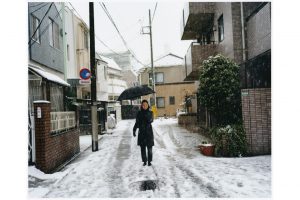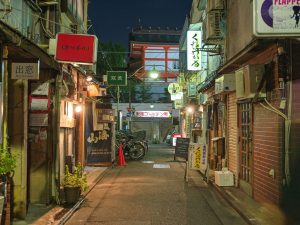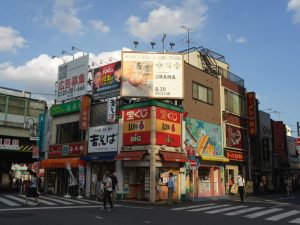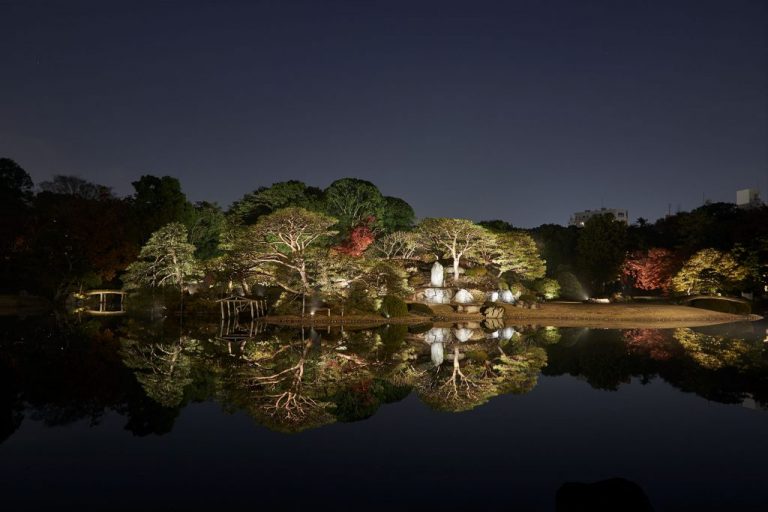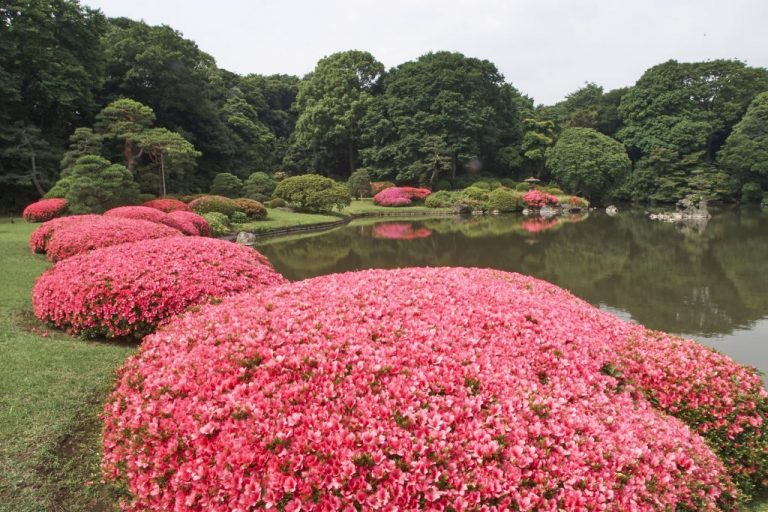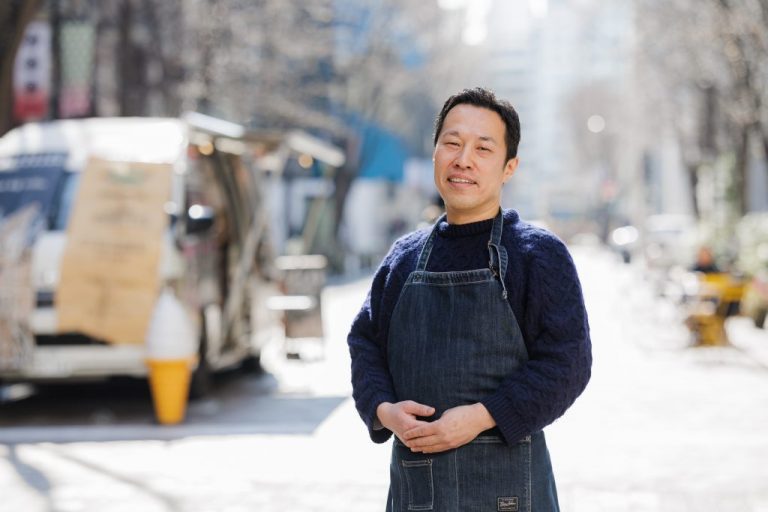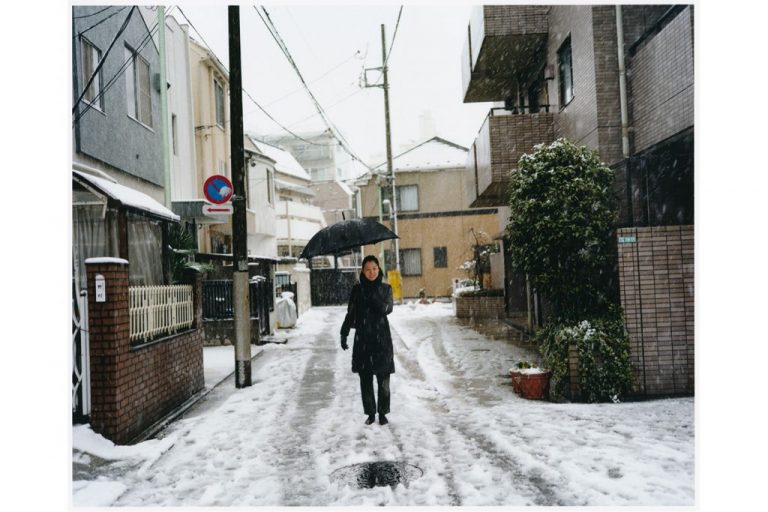In 1903 (Meiji 36), Hibiya Park was established as a pioneer of modern Western-style parks in Japan. Hibiya is not only a cultural district where cinemas and theaters gather, but also a business hub adjacent to Shinbashi, Toranomon, and Kasumigaseki where office buildings and government agencies are concentrated. As an urban oasis, Hibiya Park has carved out a history as Japan’s first Western-style park. Among its landmarks is the Hibiya Library & Museum, which boasts a symbolic exterior. Recently, Naoki Ishikawa’s exhibition was held at this venue.
Hibiya Park
Naoki Ishikawa: Traveling Through My Memories of Tokyo
No.010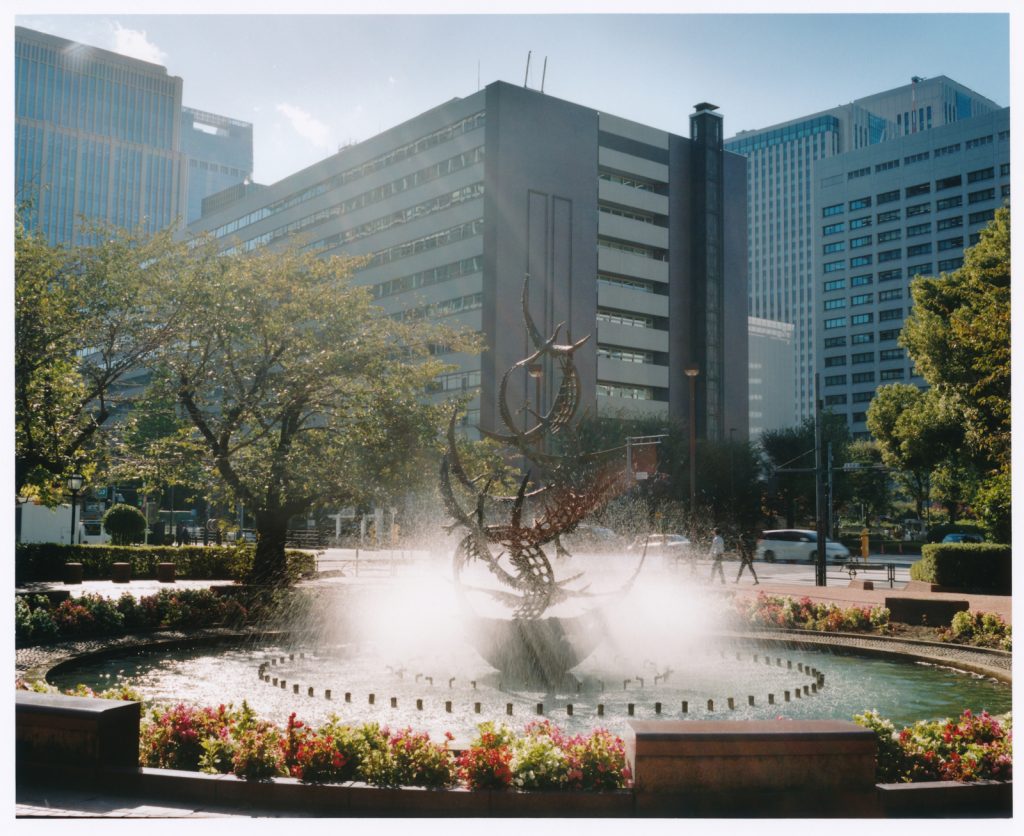
At the age of 17, starting with a solo trip to India, Naoki Ishikawa embarked on a journey fueled by an insatiable curiosity to explore polar region, high peaks, and vast oceans around the world. Mr. Ishikawa documents these experiences through photographs and writings. Tokyo is the city where he was born and raised, and it continues to be a departure and arrival point for journeys. We will follow various places in Tokyo in chronological order of his memory.
Photo & text: Naoki Ishikawa
A stylish Western-style park
The designer of Hibiya Park was Dr. Seiroku Honda, known as the “father of parks in Japan.” In Tokyo, he designed Hibiya Park and Meiji Shrine, also parks throughout Japan from Hokkaido to Kyushu.
Since its opening in 1903 (Meiji 36), Hibiya Park has witnessed numerous historical events such as the Great Kanto Earthquake, World War II, and two Tokyo Olympics. During the Taisho Era (1912-1926), the park underwent expansions, including the addition of playground equipment and tennis courts, along with the incorporation of three Western elements: Western cuisine, Western music, and Western flowers.
When it comes to Western cuisine in Hibiya Park, Matsumotoro restaurant stands out. It opened simultaneously with the park and was a trendy establishment popular among fashion-conscious youth at the time. One of their current popular dishes, the “Haikara Beef Curry,” differs from the curries I’ve had in India and Nepal, it’s not as spicy, and the meat is tender and delicious. It’s like the representative of Japan’s unique take on curry rice.
The ginkgo tree, known as kubikake icho (the neck-betting ginkgo tree), situated in front of the terrace at Matsumotoro, is estimated to be 400 to 500 years old, with a trunk circumference of 7 meters. Originally, it stood at Hibiya Mitsuke, one of the gates of Edo Castle, located around the present-day Hibiya intersection. However, it was slated for removal due to road expansion projects. Dr. Honda advocated for its preservation, declaring, “I’m willing to bet my neck to protect it.” Consequently, the tree was transplanted to its current location.
This ginkgo tree has endured various calamities throughout its history. During a protest against the ratification of the Okinawa Reversion Agreement held in Hibiya Park, Matsumotoro was engulfed in flames by Molotov cocktails thrown by students. The ginkgo tree also suffered burns from the sparks. Despite these adversities, it managed to survive and even regained its vigor, (unexpectedly) becoming somewhat of a power spot as a result.
In my mind, this ginkgo tree and Matsumotoro go hand in hand. Both hold historical significance, and I recognize them as emblematic places within Hibiya Park. While I’ve always admired them, reading Dr. Honda’s writings deepened my attachment, making me even more eager to capture them in photographs.
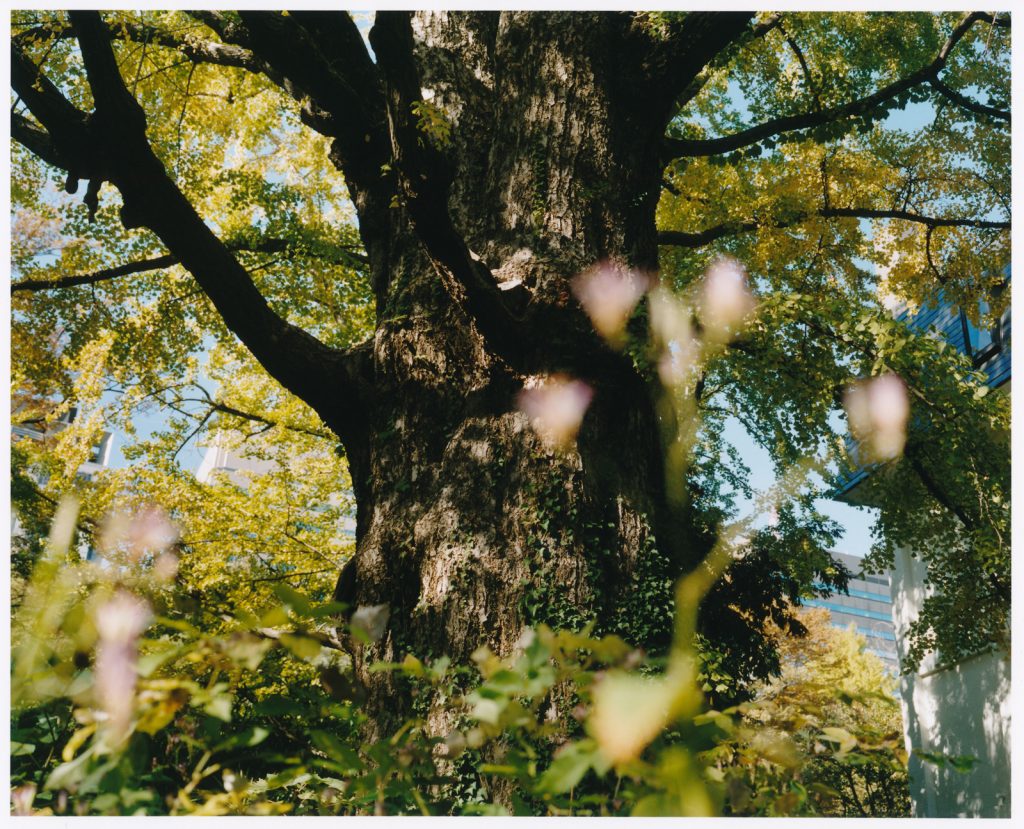
Large-scale renovation
Currently, the “Metropolitan Hibiya Park Renewal and Redevelopment Plan” is underway in preparation for the 130th anniversary of its opening in 2033 (Reiwa 15). The plan involves transforming tennis courts into multipurpose sports fields, installing universally designed playground equipment and nursing rooms, and adding roofs to the Large Open-Air Concert Hall, one of the two open-air concert halls. Renovation work has begun this year (2023), and fences can be seen in various areas throughout the park.
The Large Fountain just inside the Hibiya gate, with its conventional three-tiered structure of upper, middle, and lower levels, has been a symbol of Japan’s first Western-style park. I heard that this fountain will also undergo redevelopment.
Japan’s first open-air concert hall, the Small Concert Hall, was completed in 1905 (Meiji 38). It provided an open space where Western music could be enjoyed. The current one is the third generation.
The open-air concert hall (the Large Concert Hall), which has hosted numerous concerts over the years, will undergo its third renovation following those in 1923 (Taisho 12) and 1983 (Showa 58).
The Hibiya Public Hall is picturesque as well. It was constructed in 1929 (Showa 4) through a donation from the industrialist Zenjiro Yasuda, and is currently designated as a tangible cultural property by the Tokyo Metropolitan Government. The spiral staircase at the back is also beautiful.
We often hear the name “public hall,” but its purpose is not well known. I’ve learned that it was built during the era of Taisho Democracy to host gatherings, speeches, lectures, ceremonies, and other events. Nowadays, concerts and stage performances are also held there.
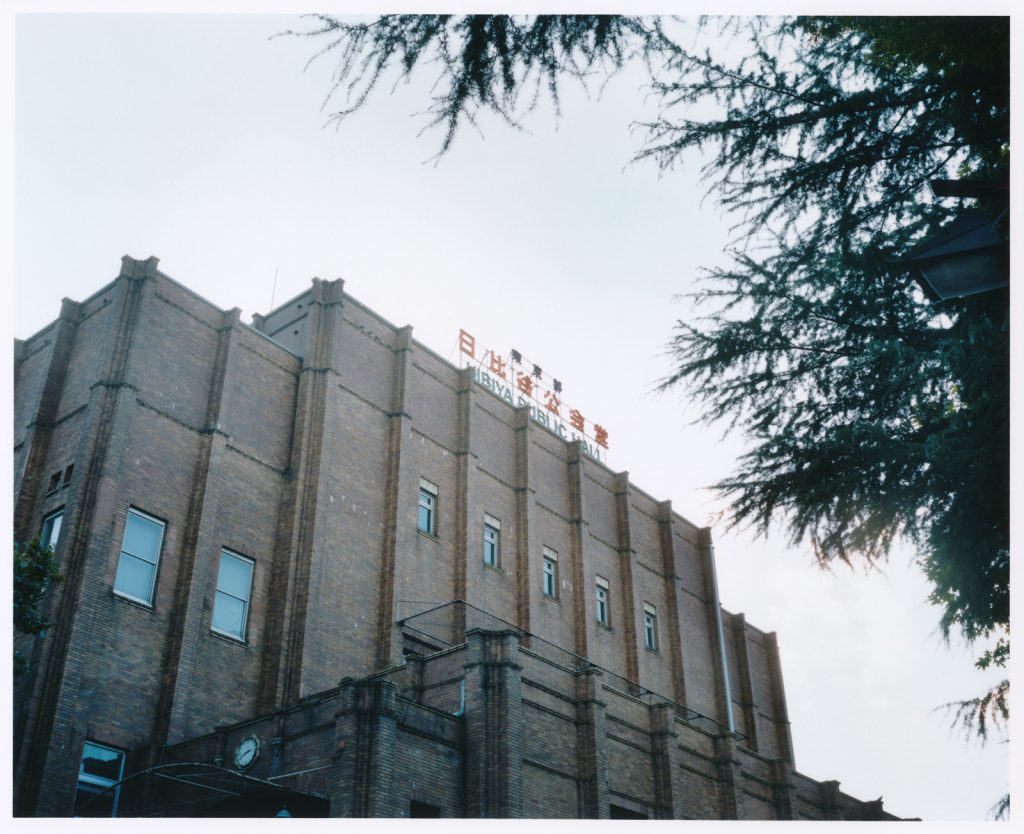
Atmosphere blending into nature
I often see people sketching in the park, and it’s rare for unexpected mishaps to occur in this protected space. There is also minimal disturbance from others. It seems like a great environment for sitting down and sketching at leisure. This is also a characteristic of Dr. Honda’s design, the winding pathways are long and intersect frequently, allowing for views of the trees from various angles.
Dr. Honda’s design of Hibiya Park, while inheriting the original concept, will evolve into something different from the current landscape through renovations. There is a sense of melancholy in that transformation, which is why I feel compelled to capture it in photographs. While there are modern methods such as 3D scanning or models to preserve the current appearance, photographs capture the perspective of the photographer. They reflect the photographer’s presence, observing the scene before them, with their gaze captured in the image.
By taking photographs and preserving them, I hope that the essence of Hibiya Park will continue to live on within the images.
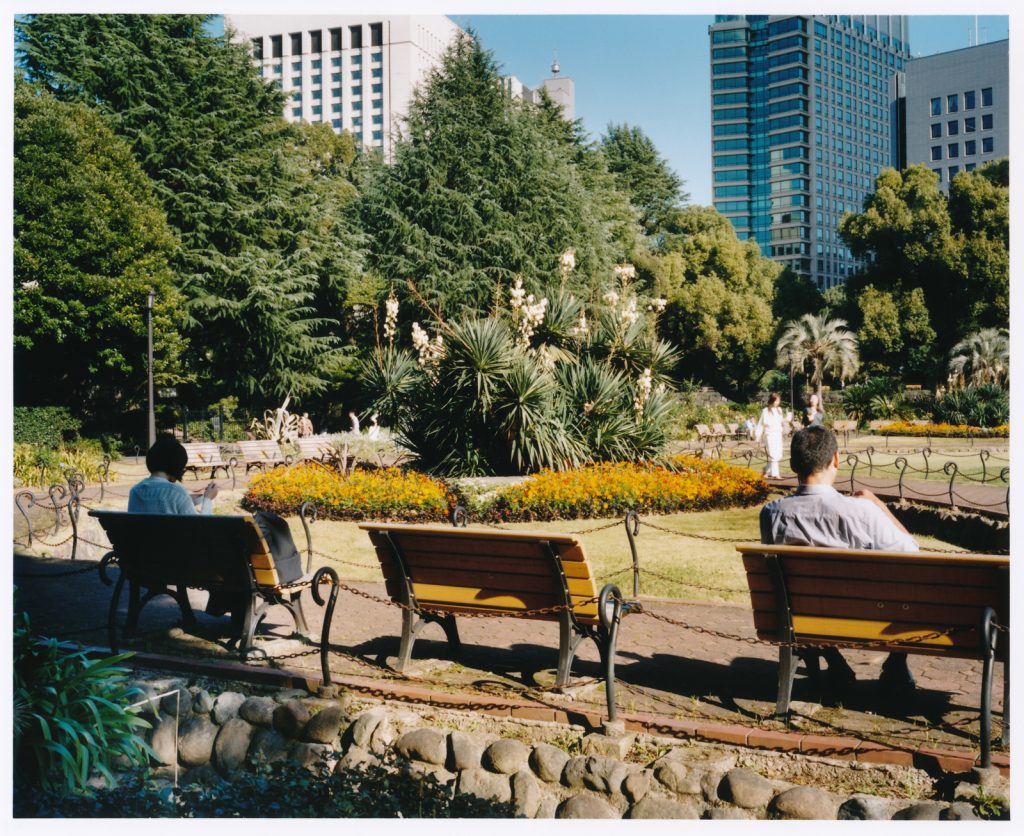
Hibiya Library & Museum
Hibiya Library & Museum opened as the “Tokyo Municipal Hibiya Library” in 1908 (Meiji 41), but it was destroyed by air raids, leading to its reconstruction in 1957 (Showa 32). At that time, due to the land remaining triangular-shaped after the reorganization of Hibiya Park’s plots, it seems that the building took on a triangular design, I heard. In 2011 (Heisei 23), it was reborn as the multifunctional cultural facility Hibiya Library & Museum, featuring a permanent exhibition room introducing the history of Chiyoda and a special exhibition room for featured (temporary) exhibitions.
In the morning, I often see people lining up to use it. Perhaps they are reserving good seats to work or study. Personally, libraries are too quiet for me and I find them unsettling, but I understand the desire to study or work by books allows for quick access to information, after all.
When I photograph architecture, I don’t necessarily focus on the architect’s intentions much. Instead, I decide on angles while walking around. I aim to capture it more as a landscape photo rather than strictly architectural photography. So, it’s okay if people are included, or if there are odd shadows. Whether it’s architecture, railways, or food, I encounter the subject as an individual and capture what personally resonates with me without consideration for conformity.
The shape of the building is one thing, the naming of the Library & Museum is also interesting. True to its name, it actively hosts cultural events. Books are always the starting point of my journeys. I read books and think, “I want to go there, I want to learn about that place,” and then I set out on my travels. Therefore, I love libraries, and in my mind, travel and books are inseparably linked, existing as dual axes in my life.
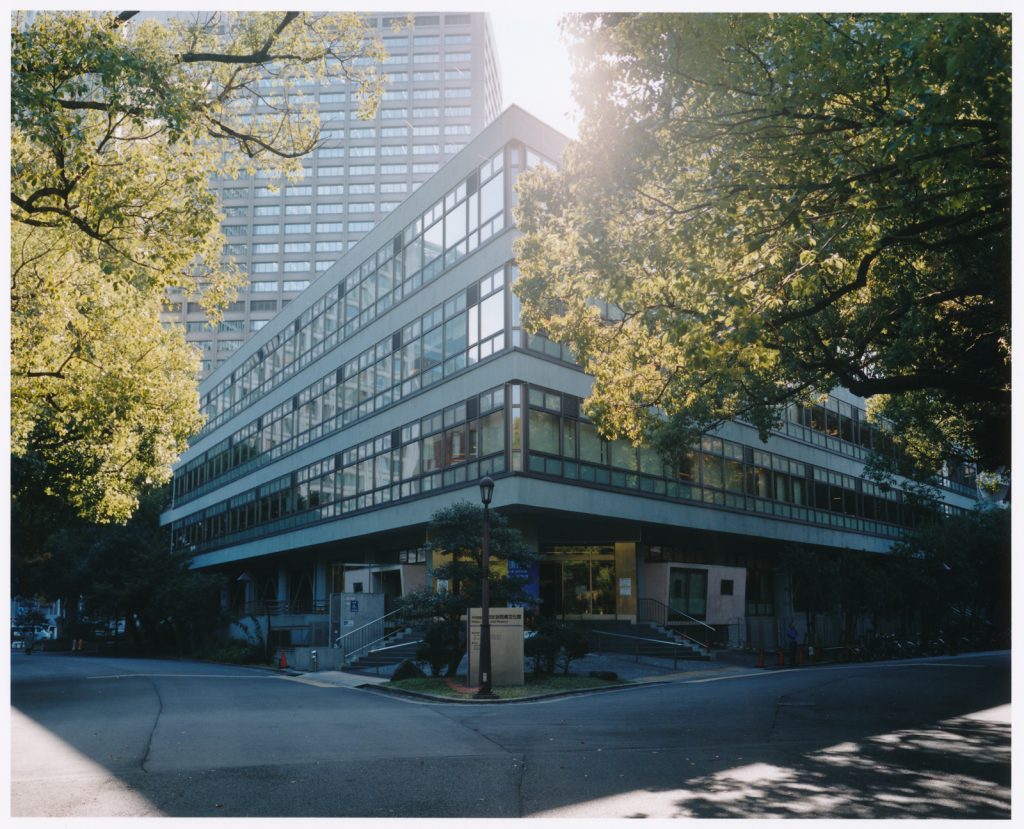
The 14 Eight-thousanders of the Himalayas
In this exhibition, I plan to display photographs of the Himalayan mountains along with the library’s collection of books and newspaper articles. There are 14 mountains in the world with elevations exceeding 8,000 meters, and all of them are located in the vast Himalayan mountain range spanning Tibet, Nepal, and Pakistan. The reason it’s mentioned as “14 peaks” is because I’m planning to climb the remaining peak, Shishapangma, in March to April next year (2024). If I can successfully summit Shishapangma, it will mark a significant milestone in my Himalayan journey.
Mountains and books go hand in hand, as mountaineers have been documenting their climbing experiences in writing since a long time ago. It can take up to two weeks of trekking on foot just to reach the base of the mountain, and sometimes more than two months to reach the summit. The comprehensive nature of such sustained activities is often difficult to convey through photographs alone. In this exhibition, I plan to display mountaineering literature alongside photographs, supplementing them with selected texts to provide a glimpse into the unique characteristics of each of the 14 peaks. The opportunity to intertwine photography and literature in an exhibition is unique to the Hibiya Library & Museum. I’m delighted to have the chance to showcase here.
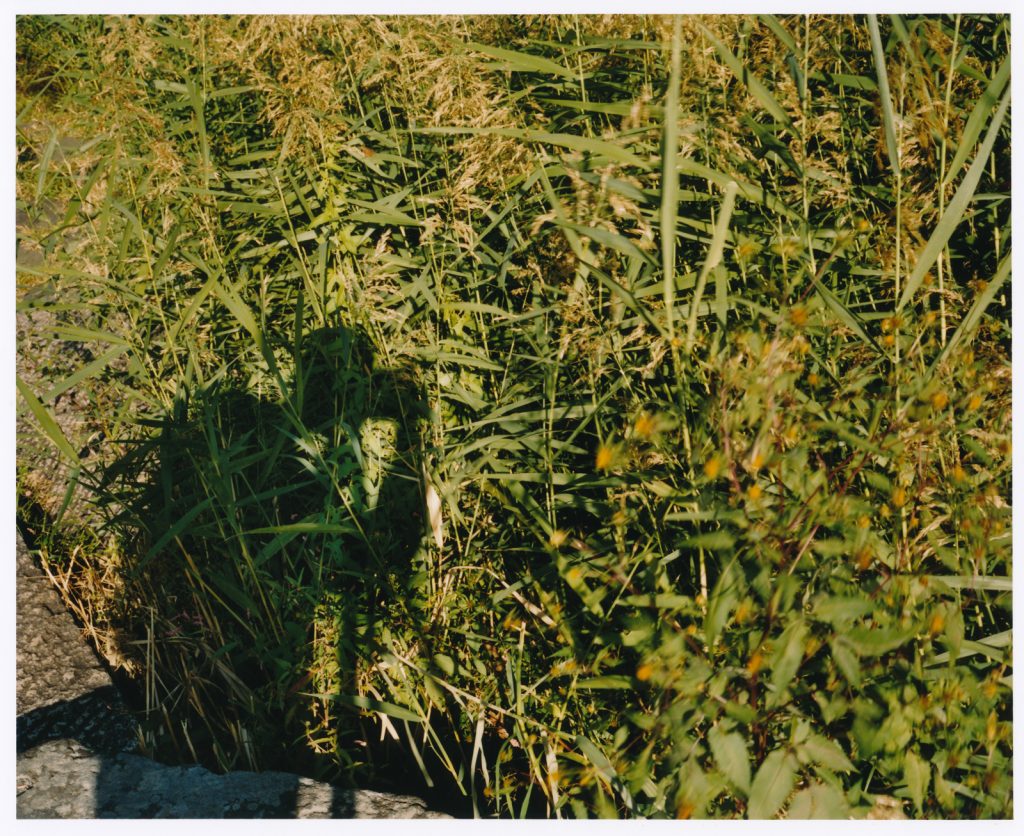
Japanese original text: Naoki Ishikawa
Special Exhibition “NAOKI ISHIKAWA: ASCENT OF 14”
Exhibition Period: December 16 (Sat.), 2023-February 18 (Sun.), 2024
Closed: Dec. 18 (Mon.), Dec. 29 (Fri.)-Jan. 3 (Wed.), Jan. 15 (Mon.)
Venue: Hibiya Library & Museum, 1F Special Exhibition Room
Admission: Adults 300 yen, University and high school students 200 yen
Organizer: Hibiya Library & Museum
*Opening hours vary depending on the day of the week. Please check the official website for details.
https://www.library.chiyoda.tokyo.jp/information/20231120-hibiyaexhibition_ascentof14/
(in Japanese)
*The exhibition has ended.
Naoki Ishikawa
Born in Tokyo in 1977. Completed the Doctor’s Degree Program of the Graduate School of Fine Arts, Tokyo University of the Arts. Driven by his interest in anthropology and ethnology, Ishikawa travels around the world, from remote areas to urban metropolises, while continuing to present his works. He won the Newcomer’s Award from the Photographic Society of Japan and the Kodansha Publication Culture Award for Photography for NEW DIMENSION (AKAAKA Art Publishing, Inc.) and POLAR (Little More Co., Ltd.), and the Domon Ken Award for CORONA (Seidosha). His numerous published books include Saigo no Bokenka (lit. The Last Adventurer) (SHUEISHA Inc.), for which he received the Kaiko Takeshi Non-Fiction Award. 2020, Ishikawa received the Lifetime Achievement Award from the Photographic Society of Japan for MAREBITO (Shogakukan, Inc.) and EVEREST (CCC Media House Co., Ltd.). Among his latest publications are Kangchenjunga (2022, POST-FAKE) and Manaslu 2022 edition (2022, SLANT). His works are housed in various public museums, including the Museum of Contemporary Art Tokyo, Tokyo Photographic Art Museum, Yokohama Museum of Art, and Okinawa Prefectural Museum and Art Museum.



